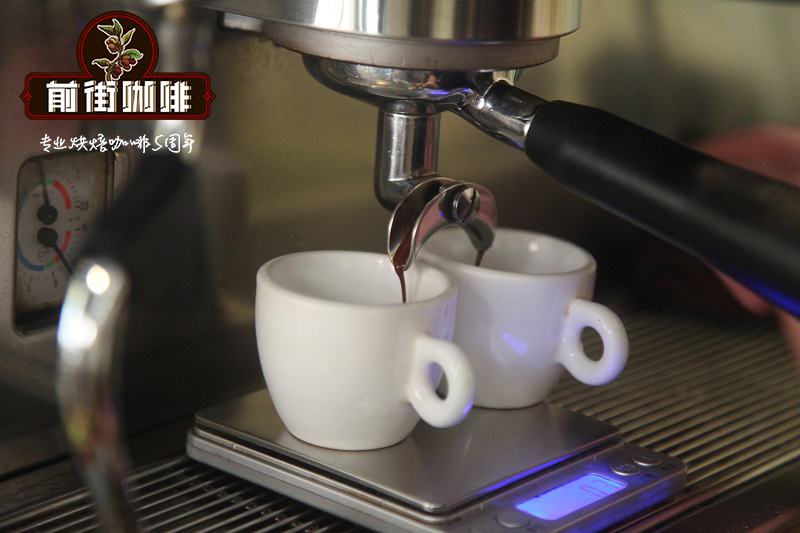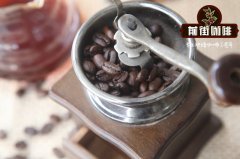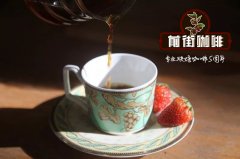Brazilian coffee amorous history Brazilian coffee price is low but the flavor is not bad how much is a cup of Brazilian coffee

Professional coffee knowledge exchange more coffee bean information please follow the coffee workshop (Wechat official account cafe_style)
Brazil is not only a football kingdom, but also a coffee empire. Once the Brazilian coffee harvest fails that year, it will trigger a sharp rise in global coffee prices. The influence of Brazilian coffee can be more far-reaching than its football. Chen Hao once led a production team to Brazil and filmed a lot of precious clips and Brazilian interesting coffee drinking methods, but Brazilian coffee has always had a low status in the boutique coffee industry, but it is the economic pillar of popular coffee.
The output of coffee beans in Brazil ranks first in the world, accounting for 1 / 3 of the global coffee production. Before World War II, according to more than half of the global supply, international coffee prices often rose sharply as a result of drought or insect infestation in Brazil. Josie Cheng Kai-Hua, a barista examiner, points out: "the consumption of Brazilian coffee beans is very high in China. People use it to make Blend (mixed beans, blending), especially espresso espresso, which is even more needed to thicken its taste and concentration."
"Brazilian Cafe", a maritime cultural resort.
In the 1970s, there was a famous coffee shop in Hong Kong called "Brazilian Coffee", which attracted literary and artistic young people at that time, just like the cultural salon in Paris at the end of the century, which was located at the Ocean Terminal in Tsim Sha Tsui. At that time, it was the ocean liner terminal. Many students who went to study in the United States and Canada, if they chose to take a boat, set off on the President at the Ocean Terminal. At that time, the Ocean Terminal was full of exotic and brand-name shops, and because some courses of the Chinese University of Hong Kong were taught in Starlight Halls and City Hall, many college students and young artists used to bring a book and order a cup of coffee to spend the afternoon dating, bumping into, talking about love and love with friends. As a matter of fact, the Brazilian Cafe is just a small shop that drinks pure coffee. They serve regular coffee, expresso and capacinno. The charge is not high or low, with a tip of HK $1 per cup, which is about the price of meals in the university canteen at that time, and it is also enough to eat two bowls of wonton noodles.
Coffee colonization trip to Brazil
"Brazilian Cafe" actually drinks Italian coffee, which is a magical combination of history, and Italians are also the most loyal fans of Brazilian coffee, because a cup of espresso can't do without it, and the mix even contains 90% of Brazilian coffee beans. As a cheap coffee bean, Brazilian coffee conforms to the economics and taste principles of Italian coffee culture. In fact, the origin of the Brazilian coffee bean variety is Ethiopia in Africa, which was introduced to Brazil in 1727, so the earliest Brazilian brown farmers were African immigrants (serfs). During his trip to Brazil, Chen Hao took us to visit Bolsa Official De Cafe, the coffee museum there. Its predecessor was Brazil's central coffee auction house and exchange. He found that after African immigrants, the largest coffee immigrants in Brazil included Japanese and Germans, while the largest number were Italians. A cup of coffee has been tasted through the ages, and coffee culture continues one after another, and coffee is also the livelihood of a large number of Brazilian farmers!
It is difficult to enter the hall of great elegance.
Coffee experts generally do not think highly of Brazilian coffee beans, thinking that they are too monotonous, bitter, sour and fragrant enough, and are not even included in the list of producing areas of fine coffee. Because most of the Brazilian coffee gardens are below 1200 meters above sea level, there are no shade trees, and the way of picking beans is rough, and the raw and ripe fruits are picked together, which does not meet the conditions of fine coffee. With the exposure tree planting method, the coffee fruit grows faster, so that the flavor is not completely developed, and there is still a smell of wood, which can not be elegant. It is also because over the past 20 years, Brazil has tried to expand its market share, replacing manual bean picking with mechanization and increasing output, but it has affected the quality and destroyed the due flavor, because only the harvest of red ripe fruit and careful handling can highlight the flavor of boutique coffee. Knowing that the Brazilian Coffee Association is dead, the Brazilian Coffee Association has made great efforts to promote reforms in recent years in order to survive in the fierce international market. among them, the raw beans of Fazenda Rainha, a Brazilian boutique coffee farm, were bought at a high price by Soberg & Hansen, a well-known Norwegian bean roaster and raw bean import company. there has been a lot of discussion in the global coffee industry, because Brazilian coffee beans have never had such a high price, and it has shaken off the notoriety of growing good coffee in Brazil.
Started drinking coffee at the age of three
When Chen Hao visited Brazilian schools, he found from the children that Brazilians had been using coffee as their breakfast drink since they were 3 years old. No wonder Brazilians love coffee so much! Reviewing the last episode of the documentary "tasting Coffee," Chen Hao's trip to Brazil even brought in the president of the Brazilian Coffee Association to make coffee cocktails himself. He even added orange juice, condensed milk and ice to the coffee and shook it happily in the cocktail shaker, which is a cup of attractive orange juice coffee. But the real Brazilian coffee cocktail is not orange, but wine, and Brazil's national wine Cachaca (a famous wine made from sugar cane, which represents Brazil's traditional culture and is loved by Brazilians like samba and football). It is also a folk flavor shaken with coffee and condensed milk with ice!
Sparrow shit coffee flew in.
"Kopi Luwak", one of the most expensive coffee in the world, actually has many "close relatives". In addition to monkey shit and elephant shit coffee, Chen Hao also personally tasted "Jacu bird coffee coffee" in Brazil. Like Kopi Luwak, it is also a processed product made by wild animals after stealing the prettiest coffee beans, while it is rarer and more expensive. It comes from coffee orchards in neighboring national parks. Every winter, it attracts a kind of bird called Jacu bird to look for food, because there are only coffee fruits available for them to eat in winter.
Brazilian coffee bean brand recommendation
Brazilian coffee beans baked on Qianjie Coffee are fully guaranteed in terms of brand and quality. More importantly, the performance-to-price ratio is extremely high, a box of 227 grams, the price is only 45 yuan. According to the calculation of 15 grams of powder per cup of coffee, a bag of coffee can make 15 cups of coffee, which costs only about 3 yuan per cup, which is recommended by conscience compared to the price sold in cafes for dozens of yuan a cup.
Important Notice :
前街咖啡 FrontStreet Coffee has moved to new addredd:
FrontStreet Coffee Address: 315,Donghua East Road,GuangZhou
Tel:020 38364473
- Prev

2018 Brazilian coffee production forecast falls How much is a catty of Brazilian coffee beans?
Professional coffee knowledge exchange More coffee bean information Please pay attention to Coffee Workshop (Weixin Official Accounts cafe_style) The latest report of Brazilian Coffee Cooperative (Cooxup), the world's largest coffee cooperative organization, lowered its coffee production estimate from 17 million bags to 14 million bags (60 kg per bag) in the southern region of Minas Gerais, compared with the previous year.
- Next

How much does a cup of Brazilian coffee cost? How is the price of coffee determined?
Professional coffee knowledge exchange More coffee bean information Please pay attention to coffee workshop (Weixin Official Accounts cafe_style) Drinking coffee is a common pastime in Taiwan Starbucks, a little bourgeois lucky feeling good, want to save some money, Louisa also provides a good environment and affordable coffee; if there is no time for fun, the whole city of City Caf is too convenient
Related
- Detailed explanation of Jadeite planting Land in Panamanian Jadeite Manor introduction to the grading system of Jadeite competitive bidding, Red bid, Green bid and Rose Summer
- Story of Coffee planting in Brenka region of Costa Rica Stonehenge Manor anaerobic heavy honey treatment of flavor mouth
- What's on the barrel of Blue Mountain Coffee beans?
- Can American coffee also pull flowers? How to use hot American style to pull out a good-looking pattern?
- Can you make a cold extract with coffee beans? What is the right proportion for cold-extracted coffee formula?
- Indonesian PWN Gold Mandrine Coffee Origin Features Flavor How to Chong? Mandolin coffee is American.
- A brief introduction to the flavor characteristics of Brazilian yellow bourbon coffee beans
- What is the effect of different water quality on the flavor of cold-extracted coffee? What kind of water is best for brewing coffee?
- Why do you think of Rose Summer whenever you mention Panamanian coffee?
- Introduction to the characteristics of authentic blue mountain coffee bean producing areas? What is the CIB Coffee Authority in Jamaica?

